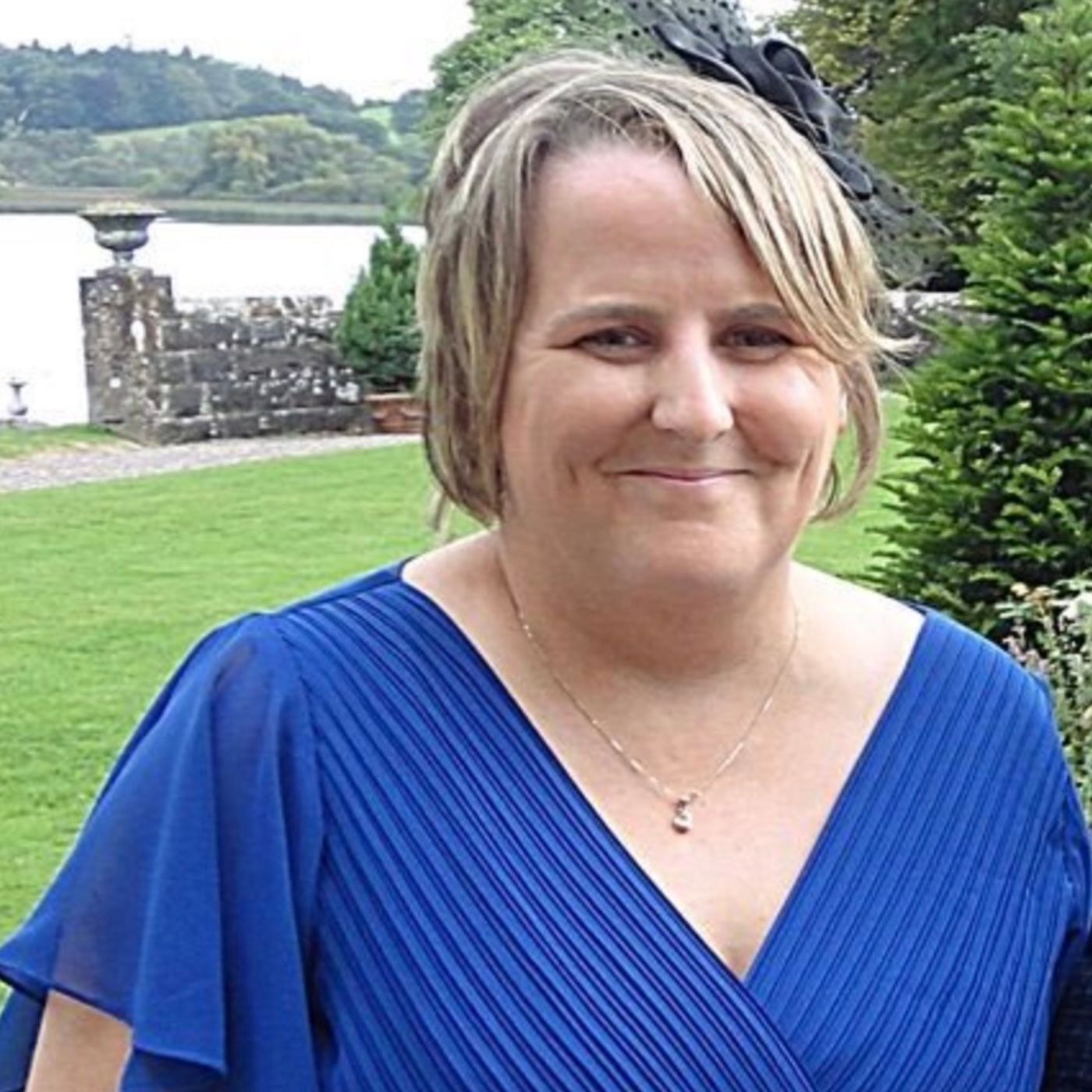Elaine O'Hara: The Perfect Murder That Wasn't

Welcome to a deeper dive into one of Ireland's most perplexing and disturbing criminal cases: the murder of Elaine O'Hara. In this blog post, we'll be expanding on the story covered in our latest podcast episode, The Hidden Truth: Elaine O Hara's Story. We delve deeper into Graham Dwyer's meticulously crafted plan to commit what he believed would be the 'perfect murder,' and how a series of unforeseen events ultimately led to his capture and conviction. We'll explore the intricate details of Elaine's life, her connection with Dwyer, the crucial evidence uncovered during the investigation, and the role of chance in bringing a killer to justice. This case serves as a chilling reminder that even the most carefully planned crimes can be undone by the smallest of details, and that justice, though sometimes delayed, can prevail.
Introduction: The Chilling Case of Elaine O'Hara
The disappearance of Elaine O'Hara in August 2012 sent shockwaves through Ireland. Initially suspected to be a suicide, the case soon morphed into a complex murder investigation that gripped the nation. Elaine, a Dublin-based childcare worker, was last seen near Shankill, a suburb south of the city. Her disappearance sparked a massive search, but it was the eventual discovery of her remains that unveiled a sinister plot, one that involved a calculated killer and a shocking secret life. This case is more than just a whodunit; it's a study in criminal psychology, digital forensics, and the unpredictable nature of justice. It's a case that reminds us of the vulnerabilities that exist in the digital age, and the power of persistence in the pursuit of truth. The chilling details of Elaine's murder and the subsequent investigation revealed a dark underbelly of Irish society, a world of online anonymity and hidden desires that ultimately led to tragedy.
Elaine O'Hara's Background and Struggles
To understand the gravity of Elaine's case, it's essential to understand her background. Elaine O'Hara was described by those who knew her as a kind and gentle soul. She worked as a childcare assistant and had a passion for animals. However, beneath the surface, Elaine struggled with mental health issues, including depression and self-harm. She documented her struggles in online forums and personal journals, providing a glimpse into her inner turmoil. These writings, while deeply personal, would later become crucial pieces of evidence in the investigation into her death. They painted a picture of a vulnerable woman, someone searching for connection and understanding, but ultimately finding herself caught in a web of manipulation and danger. Her openness about her struggles, though ultimately exploited, also highlights the importance of mental health awareness and the need for support systems for those who are suffering.
The Sinister Connection: Elaine and Graham Dwyer
The key to unraveling the mystery of Elaine O'Hara's death lay in her connection to Graham Dwyer. Dwyer, an architect by profession, married with children, he seemed an unlikely suspect at first glance. However, a deeper investigation revealed a disturbing secret life. Dwyer and O'Hara had met through a BDSM website, where they engaged in a dominatrix-submissive relationship. This relationship, initially consensual, gradually became increasingly twisted and dangerous. Evidence presented during Dwyer's trial revealed a series of text messages and communications between the two, detailing Dwyer's escalating fantasies, some of which involved violence and ultimately, the desire to kill. The discovery of this connection shattered the initial assumptions about Elaine's disappearance and pointed investigators towards a much darker and more sinister scenario. It highlighted the potential dangers of online interactions and the ease with which individuals can conceal their true intentions behind the veil of anonymity.
The Escalation of Violence and Elaine's Disappearance
As the relationship between Elaine and Graham progressed, the nature of their interactions became increasingly disturbing. Dwyer's fantasies escalated from role-playing to detailed plans of abduction, torture, and murder. Text messages recovered from Dwyer's phone revealed a chilling obsession with violence and control. In the weeks leading up to Elaine's disappearance, the communication between the two became more frequent and intense, indicating a build-up to a planned event. On August 22, 2012, Elaine O'Hara disappeared. She was last seen near Shankill. Her disappearance triggered an immediate search, but it was several weeks before any significant leads emerged. The circumstances surrounding her disappearance were initially unclear, but the evidence that would later surface painted a picture of a carefully orchestrated act of violence, planned and executed with chilling precision.
Unraveling the 'Perfect Murder': The Investigation Begins
The investigation into Elaine O'Hara's disappearance was initially hampered by the lack of concrete evidence. The initial assumption that she had taken her own life led to a slower start, but the discovery of personal items belonging to Elaine in the Vartry Reservoir in Roundwood raised serious concerns. These items, including her mobile phone and some clothing, were found in a condition that suggested foul play. As investigators delved deeper into Elaine's life, they began to uncover the online world she frequented and her relationship with Graham Dwyer. This marked a turning point in the investigation, shifting the focus from a possible suicide to a potential homicide. The Gardai (Irish police) faced the challenge of piecing together a complex puzzle, relying on digital forensics, witness testimonies, and circumstantial evidence to build a case against Dwyer. The investigation was a race against time, as the chances of finding Elaine alive diminished with each passing day.
Crucial Evidence: Digital Forensics and Chance Discoveries
The breakthrough in the case came through a combination of meticulous digital forensics and a series of chance discoveries. The recovery of mobile phones and computer equipment belonging to both Elaine O'Hara and Graham Dwyer provided investigators with a treasure trove of information. Text messages, emails, and internet search history revealed the true nature of their relationship and Dwyer's obsession with violence. Crucially, investigators were able to trace the movements of Dwyer's phone on the day of Elaine's disappearance, placing him in the vicinity of Killiney Beach. In addition to digital evidence, the discovery of cable ties in Dwyer's apartment, which matched those used to restrain Elaine, provided further incriminating evidence. However, perhaps the most significant piece of evidence was the discovery of a SIM card in Vartry Reservoir, near Dublin. This SIM card contained text messages that directly implicated Dwyer in Elaine's murder. The discovery of this SIM card was purely by chance, a stroke of luck that ultimately proved to be Dwyer's undoing. A Dunnes Stores loyalty card in Elaine's name was also found. The combination of digital forensics and chance discoveries highlighted the importance of thorough investigation and the unpredictable nature of criminal investigations.
Graham Dwyer's Trial and Conviction
The trial of Graham Dwyer was a landmark event in Irish legal history. The prosecution presented a compelling case, built on a foundation of digital evidence, circumstantial evidence, and expert testimony. The text messages between Dwyer and O'Hara, detailing his violent fantasies and plans, were presented as evidence of his motive. The GPS data from Dwyer's phone, placing him at key locations on the day of Elaine's disappearance, was used to establish his presence at the scene of the crime. The discovery of the SIM card and the cable ties further strengthened the prosecution's case. Dwyer's defense attempted to cast doubt on the evidence, arguing that the text messages were merely fantasies and that the SIM card could have been planted. However, the jury was ultimately convinced of Dwyer's guilt, and he was convicted of the murder of Elaine O'Hara in March 2015. The conviction brought a sense of closure to Elaine's family and friends, but it also raised broader questions about online safety, mental health, and the potential for violence within seemingly ordinary individuals.
How Chance Events Led to Justice for Elaine
The case of Elaine O'Hara is a testament to the role of chance in bringing criminals to justice. While meticulous investigation and digital forensics played a crucial role, it was a series of unforeseen events that ultimately led to Dwyer's conviction. The discovery of Elaine's personal items, the recovery of the SIM card in Vartry Reservoir, and the discovery of the cable ties in Dwyer's apartment were all moments of serendipity that significantly advanced the investigation. Had these pieces of evidence not been found, it is possible that Dwyer would have remained free. This highlights the unpredictable nature of criminal investigations and the importance of pursuing every lead, no matter how small or insignificant it may seem. It also underscores the fact that even the most carefully planned crimes can be undone by the smallest of oversights or unexpected events.
Conclusion: The Importance of Unforeseen Circumstances in Unmasking Crime
The murder of Elaine O'Hara by Graham Dwyer is a chilling reminder of the darkness that can lurk beneath the surface of seemingly ordinary lives. As we discussed in this blog post, and even more in-depth in the "The Hidden Truth: Elaine O Hara's Story" episode, while Dwyer meticulously planned what he believed to be the 'perfect murder', a series of unforeseen circumstances ultimately led to his capture and conviction. The case highlights the crucial role of digital forensics in modern criminal investigations, as well as the unpredictable nature of chance discoveries. It serves as a cautionary tale about the dangers of online interactions and the importance of addressing mental health issues. It reminds us that even in the darkest of times, hope and justice can prevail, often through the most unexpected of means.



